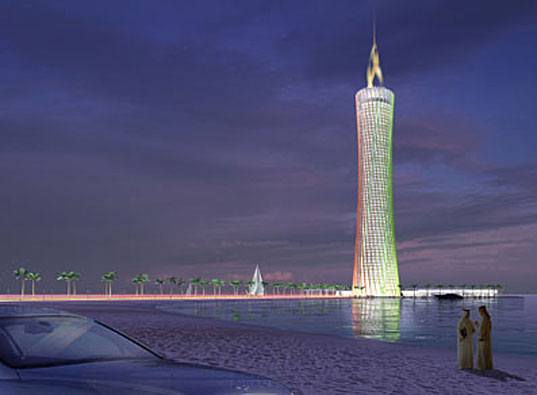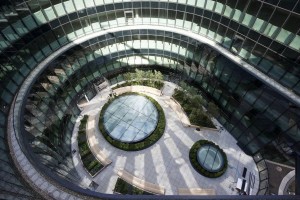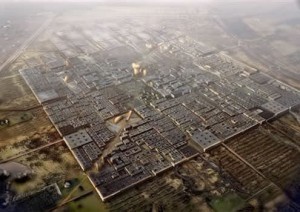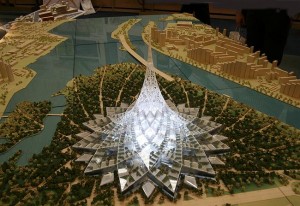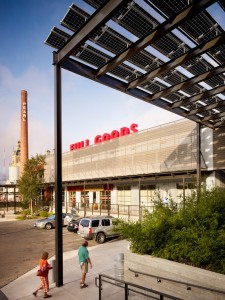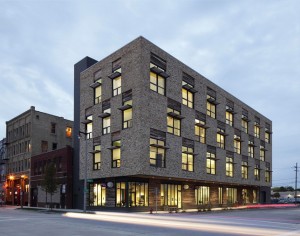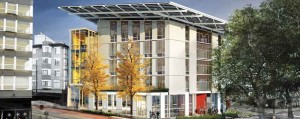The environment is changing for the worse due to our masses of energy consumption – but we still need more buildings for businesses and homes with our expanding population. That’s why the need to be eco-friendly is becoming more and more important – this means we need to start creating buildings that are powered, or at least partially powered by renewable energy, in order to reduce our carbon footprint. We also need to be mindful of the levels of waste our homes and offices are producing; waste water, trash and emissions can damage the environment and cost a lot of money to dispose of properly – but with on-site water treatment plants and recycling facilities our buildings can become greener! Starting to invest in building eco-friendly buildings now might be expensive, but with the amount you save on electricity and other utilities with these buildings we will start to make this money back over time.
The buildings on this list however, cater for our need for space, but still avoid impacting on the environment too much.
PricewaterhouseCoopers Building, London
The PricewaterhouseCoopers building is the most environmentally friendly building in London; it even features an integrated IT system which lets individual workers control their light and temperature in their space.
The building includes environmental innovations such as the use of 80% recycled aggregate within the concrete used, and the recycling of waste heat to cool and warm the building, and 25% of energy produced on site using recycled cooking oil and the use of solar thermal panels.
Bank of America, New York
In this building designed by Cook and Fox, waste water and rainwater are reused, the tower can be heated by the sun, and the windows are designed to provide as much natural light as possible. The tower was even build with renewable materials.
The form of the building deviates from its footprint, increasing the level of surface area exposed to day light and giving oriented views onto Bryant Park. Sustainable measures keep the building well insulated and protected from excess heat gain. The curtain wall is made of low-e glass and heat-reflecting ceramic frit. The building also incorporates water-saving measures such as waterless urinals, greywater recycling, and rainwater harvesting systems. The building also filters the air that is delivered to the offices and can be individually controlled. Overnight, a thermal ice-storage tank in the cellar produces ice in order to reduce peak demand on the city’s electric grid. A 4.6 megwatt cogeneration plant covers 70% of the building’s annual energy use with clean, efficient power.
India Tower, Mumbai
This building was completed in Mumbai in 2010, and it symbolises the country’s move towards an environmentally friendly future. The tower makes use of rainwater recycling, natural lighting, and natural ventilation. It is also the first green building by any government body in the country. It is equipped with a rainwater harvesting system, solar panels for harnessing solar energy, anti-reflective tiles fitted on the terrace so as to limit the consumption of electricity by air-conditioners to a minimum.
Antilia Building, Mumbai
Another building from Mumbai, but shockingly this entire building is just one man’s home. It belongs to property mogul Mukesh Ambani. The building will act as a carbon filter for Mumbai, as it is covered in rooftop gardens.
Burj Al-Taqa, Dubai
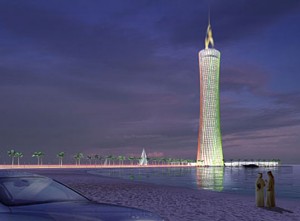
The Burj al-Taqa, otherwise known as Dubai’s energy tower, was a proposed building, which was going to be built but had to stop due to the global financial crisis. No-one knows if the building will go ahead, but the project was never officially cancelled. The structure would have included a 200ft wind turbine and numerous solar panels.
Masdar, Abu Dhabi
This monumentous 64,583,462 square foot development is a project by the Abu Dabi Future Energy Company, it’s a futuristic city that is currently being built, and it will rely entirely on solar energy and other renewable sources. The city is also planned to be carbon neutral and car free. Not only that, but it’s self-sustaining too.
Thornton Tomasetti provided structural design, through construction documents, for a seven-story, 1.25 million-square-foot mixed-use building that could operate as net-positive — generating more electricity than it used.
Tower of Glass, Khanty Mansiysk, Siberia
This faceted tower is proposed to be built in Siberia in the middle of a densely wooded area. It’s shape to maximise the impact of solar panel electricity due to reflections, and light the building up in the daytime.
In terms of green features, the tower centers around a South-facing atrium, which maximizes daylight and solar gain, minimizing the need for artificial lighting and providing insulation during the colder months. The structure will also rest lightly on the land and rely on renewable energy sources.
Crystal Island, Moscow
Crystal Island is a building project in Moscow that will become the world’s largest building with 27,000,000 square foot of floor space. The building will feature a ‘second skin’ which will be a thermal buffer for the building, that opens in the summer to increase ventilation, and closes in the winter to shield against Moscow’s icy winters.
And as we’d expect from Foster + Partners, this soon-to-be world’s biggest building will also incorporate a number of sustainable design features into the overall scheme. The exterior facade will be solar responsive and will include solar panels which, along with wind turbines, will generate electricity for the huge tower. Natural ventilation will be provided thanks to numerous strategically placed large atriums. The internal environment will also have dynamic enclosure panels slotted into the structural framing that will allow daylight to penetrate deep into the heart of the structure; the panels will also be controlled to modify temperature inside the building – closed in winter for extra warmth and opened in summer to allow natural ventilation. Energy management is at the heart of this structure, several on-site renewable and low-carbon energy generation projects are planned.
Transbay Tower, San Francisco
The Transbay tower will be a 1,200ft tall structure, that will feature a bus terminal with a glass rooftop park, designed to absorb CO2 from busses. The tower will also feature wind turbines on its roof, and sun shades for solar control.
Council House 2, Melbourne
Melbourne’s council building features wind turbines, sewage recycling, chilled ceilings and photovoltaic-powered recycled louvers that track the sun and promote a healthier internal environment.
Cor, Miami
It might be a little strange looking, but this building is highly energy efficient; the strange bubbles provide enclosures for wind turbines and garden terraces.
BMW Welt, Munich
This strange structure supports a roof covered in a photovoltaic array, which produces a minimum of 824kWp of energy; there are also steel panels that help heat the building using solar gain.
DuBiotech, Dubai
DuBiotech is a research and biotechnology park in Dubai, so it was important for them to have a new headquarters that they look the part. The design maximizes daylight, limits solar going from the hot climate, and regulates the internal temperature of the building.
Northern Arizona University, USA
This university building is one of the three greenest buildings in the world, which gives it a coveted platinum award rating. Their solar power system covers at least 20% of their energy use, and there are also venting windows and automatic shade controls.
Phipps Conservatory and Botanical Gardens, Pittsburgh
This building was built to achieve zero-net energy consumption, with the aid of solar panels, wind turbines and geothermal wells. Black water and storm water is treated on-site for reuse, and this building even has a rooftop garden.
Merritt Crossing Senior Apartments, California
The roof area of this building features both solar and photovoltaic panels, and the windows have high-performance glass designed to keep the interior at the right temperature. There is even a low volume ventilation system to keep the apartments cool in summer without air con
Pearl Brewery, Texas
This warehouse and brewery has obtained a gold LEED award, because of its ingenious cooling system that lets air travel through the building. They also recycle rainwater, and use it to irrigate the landscaping on-site.
Clock Shadow Building, Wisconsin
This building was developed on a brownfield site that many found difficult to build on, so not only does it use up land that would otherwise be wasted, but it also runs on geothermal power, which is drilled directly below the building.
US Federal Centre Buildings, USA
This is one of the first Western buildings to use piles for geothermal heating and cooling, it also utilises chilled sails and open office lighting to minimise its energy consumption.
Bullitt Centre, Seattle
This is the greenest commercial building in the world, it, like many other buildings on this list, uses a solar array and rainwater use minimize energy use. It was officially opened on Earth day, and it is designed to last for over 250 years. The Bullitt centre can even stand alone from the municipal water system!


